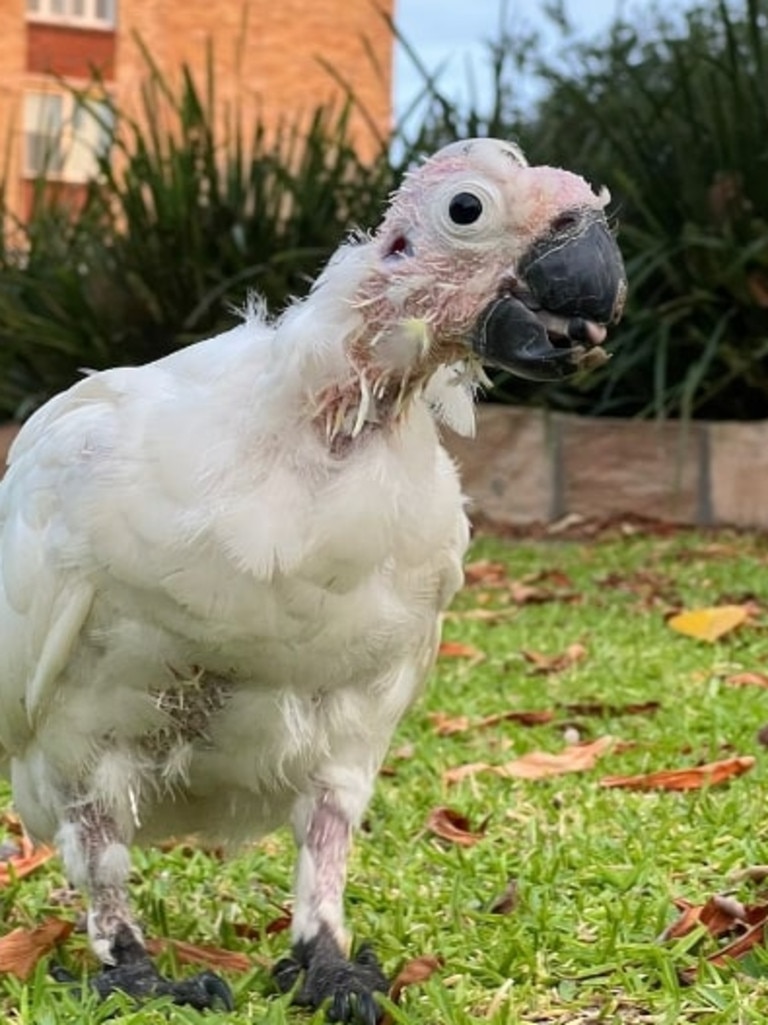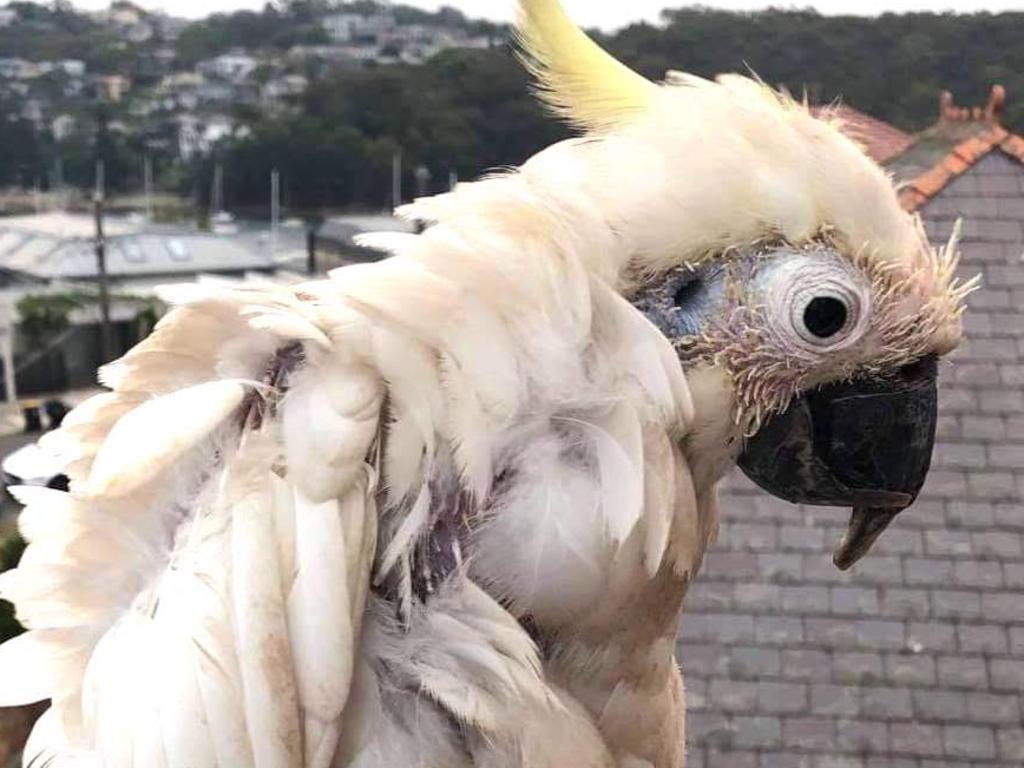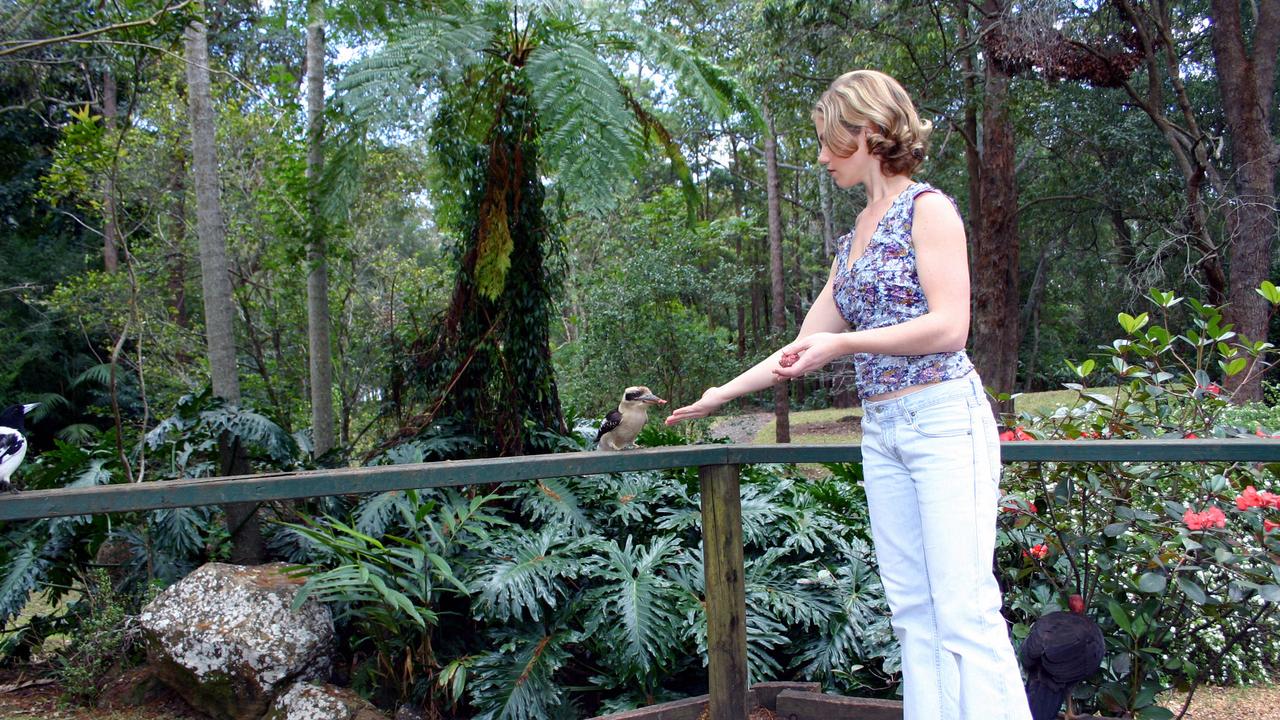The deadly bird disease behind shock photo of Aussie wildlife icon
A picture of a Sulphur-crested cockatoo on Facebook has sparked concern online, as the heartbreaking reason for its appearance is revealed.

A photo shared on social media of a much loved member of Australian wildlife has sparked shock and concern.
The photo, shared on Facebook, shows what appears to be a sulphur-crested cockatoo with no feathers on its head, neck and legs, with a deformed beak, in distress.
Commenters were quick to point out that the cocky seemed to be suffering from Psittacine beak and feather disease (PBFD) a contagious viral disease that causes immunological suppression as well as beak and feather abnormalities, and is a death sentence for birds affected.


“That is feather and beak disease, a highly contagious and a painful death,” one wrote.
“Definitely looks like feather and beak disease,” posted another.
“The kindest thing for this poor cockatoo would be for it to be euthanised.”
WIRES spokesperson John Grant said the disease, which largely affects parrots, cockatoos and lorikeets, is a common one to see amongst these species.
“The virus happens from time to time and the jury’s still out, I think, on what causes or doesn’t cause it,” he said.
“What it is, is dander or feather dust, it is like a bird version of dandruff, so, when infected birds come together and congregate, it can spread from bird to bird.
“When a bird has this, because it’s a virus, and it’s hard to treat and they will eventually die from it.”

Mr Grant said there is no clear answer on what causes PBFD even if they are aware of how virus is passed from bird to bird.
“We know how it’s spread between birds, but we don’t know why,” he said.
“It could be climate conditions, it could be caused by loss of habitat, bird feeders could be causing a problem.”
A number of commenters on the post pointed to human interaction as the cause of the disease, or the very least the reason behind its spread, one commenter posting “it’s highly contagious and is spread when people provide seeds”.

Mr Grant agreed and said people feeding the birds could very well be contributing to the spread of PBFD, he also urged people not to feed wildlife as it can cause plenty of other problems.
“PBFD is spread by this dander so it’s a bit like Covid-19,” he said.
“They will congregate where they are fed and they get close enough to one another and they drop this dander. There are other diseases they can catch from people feeding them as well.
“We never advise feeding, because the wildlife become reliant on feeding and then the young become reliant on feeding, then if that person moves or whatever they are left to try learn to fend for themselves.”
Mr Grant called for members of the public who spotted a bird suffering from PBFD to contact WIRES or their local wildlife shelter.





